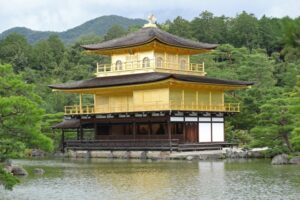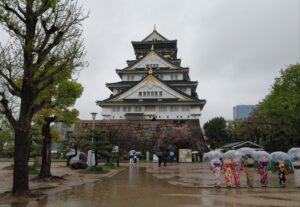Fushimi Inari Taisha Shrine - Kyoto shrine with 1,000 torii gates
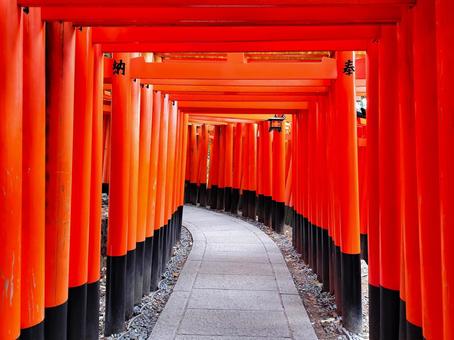
Fushimi Inari-taisha Shrine is one of the most popular tourist spots in Kyoto, known for its fantastic sight of a thousand vermilion torii gates.
This article provides a comprehensive overview of Fushimi Inari Taisha, including a guide to the shrine grounds, hiking information, history, souvenirs, accessibility, nearby dining spots, and other useful information for foreigners.
Refer to Ninja Blog article on 9 Must-Visit Shrines in Kyoto for more information!
Official name: Fushimi Inari Taisha
Address: 68 Fukakusa Yabunouchicho, Fushimi-ku, Kyoto City, Kyoto Prefecture 612-0882
Opening hours: 24 hours
Admission fee: Free
Telephone number: +91-075-641-7331
Fushimi Inari Taisha's official website
- What is Fushimi Inari Taisha Shrine?
- Guide to the grounds of Fushimi Inari Taisha Shrine
- Hiking trails at Fushimi Inari Shrine
- History of Fushimi Inari Shrine
- The Thousand Torii Gates of Fushimi Inari Taisha Shrine
- Recommended souvenirs at Fushimi Inari Taisha Shrine
- Access to Fushimi Inari Taisha Shrine
- Dining Spots around Fushimi Inari Shrine
1. What is Fushimi Inari Taisha Shrine?
Fushimi Inari Taisha is a shrine located in Fushimi-ku, Kyoto.
It is the main shrine (the largest and central shrine) of the approximately 30,000 Inari shrines (one of the most familiar deities to the Japanese people, and the guardian deity of good harvests, prosperous business, etc.) located throughout Japan.
The foxes often seen at Fushimi Inari Taisha are messengers of the gods.
The tunnel of vermilion torii gates, called Senbon-torii, is the symbolic landscape of Fushimi Inari-taisha.
2. Guide to the grounds of Fushimi Inari Taisha Shrine
Fushimi Inari Taisha boasts a vast area of approximately 870,000 square meters.
There are many things to see and do within the grounds of Fushimi Inari Taisha.
Senbon-torii
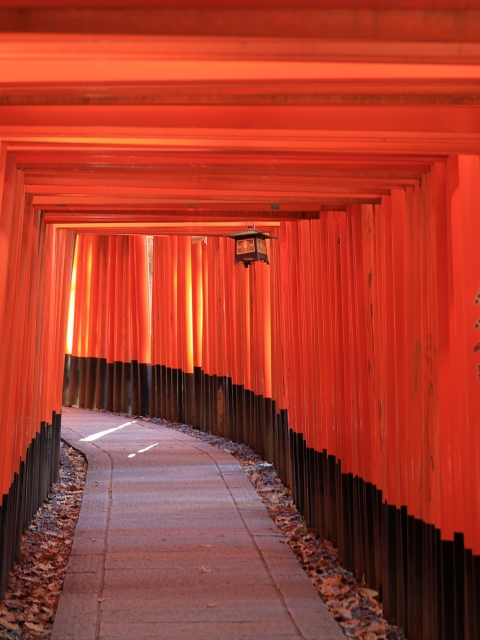
The Senbon-torii, a tunnel of about 10,000 torii gates, is synonymous with Fushimi Inari Taisha.
It is a fantastic sight to see and a popular photo spot for tourists.
The best time to visit the shrine is early in the morning, as it is crowded during the day.
Okumiya
Okumiya is located on the approach leading from the main shrine of Fushimi Inari to the Senbon-torii, Okumiya enshrines the sacred body of Fushimi Inari Taisha and is located just past the main torii gate.
It is a historic building designated as an important cultural property.
Okusha Hohaisho
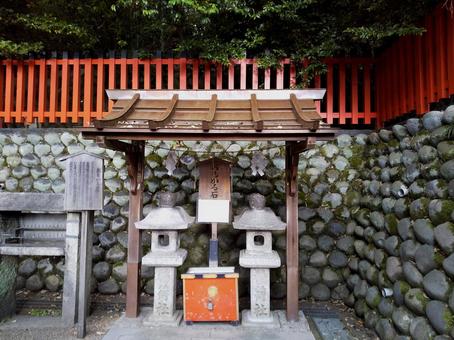
Okusha Hohaisho is located on the east side of the main shrine, past the Senbon-torii (gateway to the shrine).
On the right side of this place of worship is a stone lantern called "Omokaru-ishi".
In front of this stone lantern, visitors lift the head of the stone lantern to see if their wish will be granted or not, and if the weight of the stone lantern is lighter than expected, the wish will be granted.
If it is heavier, it is more difficult to make the wish come true.
If you find one, please give it a try.
3. Hiking trails at Fushimi Inari Shrine
Fushimi Inari Mountain is popular as a hiking course because the entire mountain is considered to be a sacred area (a holy place).
It takes about 2 hours to reach the summit and offers beautiful views.
The trail is relatively well maintained, but it is recommended to wear comfortable walking shoes.
4. History of Fushimi Inari Shrine
Fushimi Inari Taisha was founded in the Nara period (711).
Fushimi Inari was originally a shrine built to pray for a good harvest of rice.
Some say that the name "Inari (稲荷)" comes from the word "Inari (稲なり)" (meaning "rice grows").
Later, the shrine was destroyed in warfare, but it has long been deeply worshipped and has been loved in various forms for more than 1,300 years.
5. The Thousand Torii Gates of Fushimi Inari Taisha Shrine
Fushimi Inari Taisha is famous for its torii gates, called senbon torii.
Many of these torii gates are dedicated by visitors to the shrine.
When did so many torii gates begin to be built?
Actually, since the Edo period (1603-1603), the practice of dedicating torii gates as a sign of gratitude has spread, as it means that one's wish "came through" or "was granted".
Torii gate dedications are still accepted today.
Currently, about 10,000 torii stand in a row along the entire approach to the mountain.
6. Recommended souvenirs at Fushimi Inari Taisha Shrine
There are many souvenir shops around Fushimi Inari Taisha Shrine.
A variety of products are available, including standard Inari goods, Japanese sweets, and miscellaneous goods.
■Osen no Sato Matsuya
You can buy fox-shaped rice crackers and Japanese version of fortune cookies, each of which is baked by hand.They are light in weight and easy to carry.
[Business hours] 8:00am -6:30pm
[Closed] Irregular holidays
[Phone] +81-075-641-1906
[Access] About 1 minute walk from Fushimi Inari Station on the Keihan Main Line, about 5 minutes walk from Inari Station on the JR Nara Line
Matsuya's official website
■Gallery KACCO
Looking for cute fox goods?
You can also try your hand at painting fox masks (from 1,500 yen, 30 minutes to 1 hour) and create your own favorite mask to accompany your visit to Fushimi Inari.
[Business hours] 10:00am - 5:30pm
[Closed] Fridays *Open on public holidays
[Phone] +81-075-641-5527
[Access] About 3 minutes walk from JR Nara Line "Inari Station" or Keihan Main Line "Fushimi Inari Station"
kacco's official website
7. Access to Fushimi Inari Taisha Shrine
The Fushimi Inari Taisha shrine can be accessed by the following means.
Taxis can be used, but as the surrounding roads are quite crowded, the use of trains is recommended.
[Train]
1) JR Nara Line, get off at Inari Station, walk straight ahead (5 minutes from Kyoto Station)
2) Keihan Main Line, get off at Fushimi Inari Station, walk 5 minutes east
[City Bus]
Minami 5 Line, get off at Inari Taisha-mae, walk 7 minutes east
8. Dining Spots around Fushimi Inari Shrine
There are many places to eat around Fushimi Inari Taisha Shrine.
Please be sure to try some traditional Japanese food!
■Irori Jaya Nanakorobi Yaoki
A hands-on cafe where you can enjoy Kyoto's famous dumplings, tofu, fu, and fried bean curd cooked by yourself on the hearth.
[Business hours] 11:00am - 5:30pm *Reservation required online
[Closed] Thursdays, 3rd Wednesday
[Phone] +81-075-634-8161
[Access] About 2 minutes walk from "Fushimi Inari Station" on the Keihan Main Line, about 6 minutes walk from "Inari Station" on the JR Nara Line
■KOMINJI Cafe KOMOMUSUBI
Why don't you recharge your energy with "Onigiri", a classic Japanese home-style dish?
We also recommend our daily special onigiri.
[Business hours] 9:00am - 3:00pm
[Closed] Irregularly
[Phone] None
[Access] 45-6 Kenasacho, Fushimi-ku, Kyoto City, Kyoto Prefecture, 3 minutes walk from Keihan "Ryukoku University Mae Fukakusa Station", 7 minutes walk from JR "Inari Station"
■Nishimura-tei
Why don't you try delicious kitsune udon in the precincts of Fushimi Inari?
These noodles are friendly even to children.
[Business hours] 10:00am - 3:00pm (Monday-Friday), 9:00am - 4:00pm (Saturday, Sunday)
[Closed] Irregular holidays
[Phone] +81-050-5486-5231
[Access] Yotsutsuji, Inariyama Government Land, Fushimi-ku, Kyoto City, Kyoto Prefecture 612-0804
Nishimura-tei's official website
What are we?
We run Ninja Experience Cafe in Tokyo, Kyoto and Osaka, Japan.
Here you can immerse yourself in Japanese culture through experiencing ninja training.
Both adults and children are welcome to try their hand at defeating the ninja master inside the cafe.
The cafe is an indoor interactive zone, so it can be enjoyed even on rainy days.
If you are thinking "I want to be a real ninja too!” or interested in becoming a real ninja, please visit us.
Reservations can be made here.
Unauthorized copying and replication of the contents of this site, text and images are strictly prohibited.





